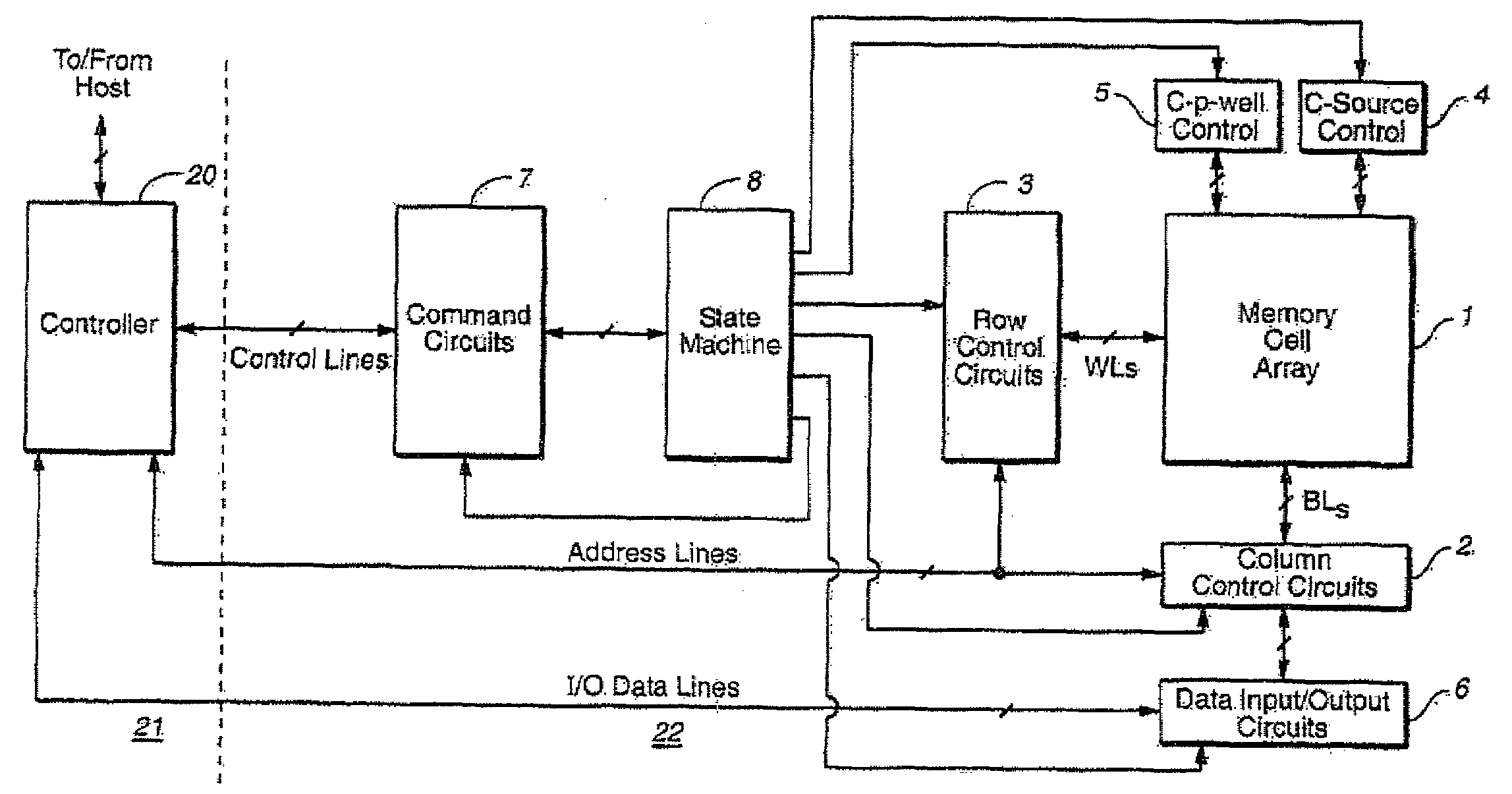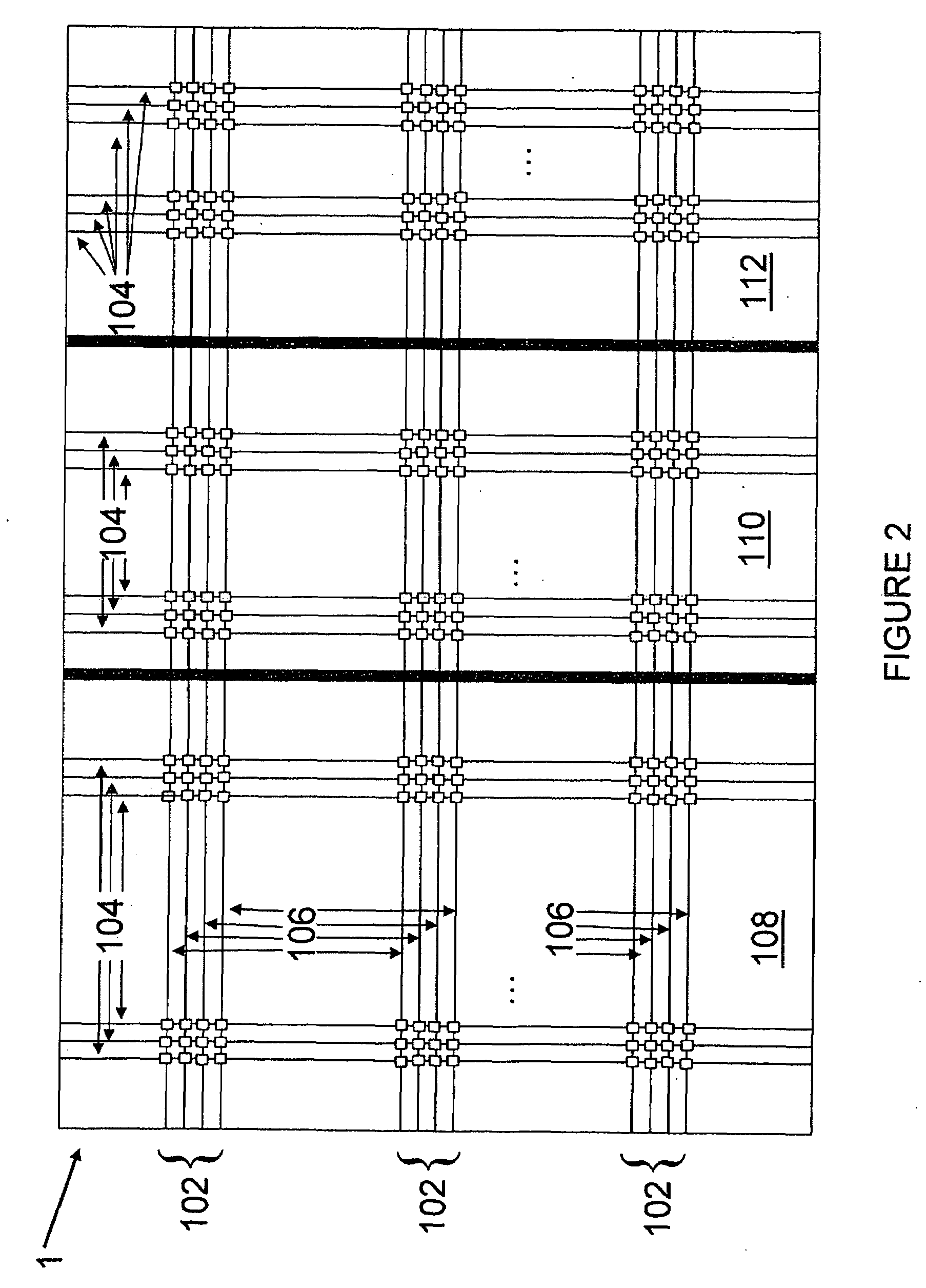Ad hoc flash memory reference cells
a flash memory and reference cell technology, applied in the field of flash memories, can solve the problems of increasing the size of flash dies, changing the threshold voltage of cells with the time, and the cost of flash silicon substrates
- Summary
- Abstract
- Description
- Claims
- Application Information
AI Technical Summary
Benefits of technology
Problems solved by technology
Method used
Image
Examples
Embodiment Construction
[0032]The principles and operation of a flash memory according to the present invention may be better understood with reference to the drawings and the accompanying description.
[0033]Referring now to the drawings, FIG. 1 is a high-level schematic block diagram of a flash memory device. A memory cell array 1 including a plurality of memory cells M arranged in a matrix is controlled by a column control circuit 2, a row control circuit 3, a c-source control circuit 4 and a c-p-well control circuit 5. Column control circuit 2 is connected to bit lines (BL) of memory cell array 1 for reading data stored in the memory cells (M), for determining a state of the memory cells (M) during a writing operation, and for controlling potential levels of the bit lines (BL) to promote the writing or to inhibit the writing. Row control circuit 3 is connected to word lines (WL) to select one of the word lines (WL), to apply read voltages, to apply writing voltages combined with the bit line potential le...
PUM
 Login to View More
Login to View More Abstract
Description
Claims
Application Information
 Login to View More
Login to View More - R&D
- Intellectual Property
- Life Sciences
- Materials
- Tech Scout
- Unparalleled Data Quality
- Higher Quality Content
- 60% Fewer Hallucinations
Browse by: Latest US Patents, China's latest patents, Technical Efficacy Thesaurus, Application Domain, Technology Topic, Popular Technical Reports.
© 2025 PatSnap. All rights reserved.Legal|Privacy policy|Modern Slavery Act Transparency Statement|Sitemap|About US| Contact US: help@patsnap.com



